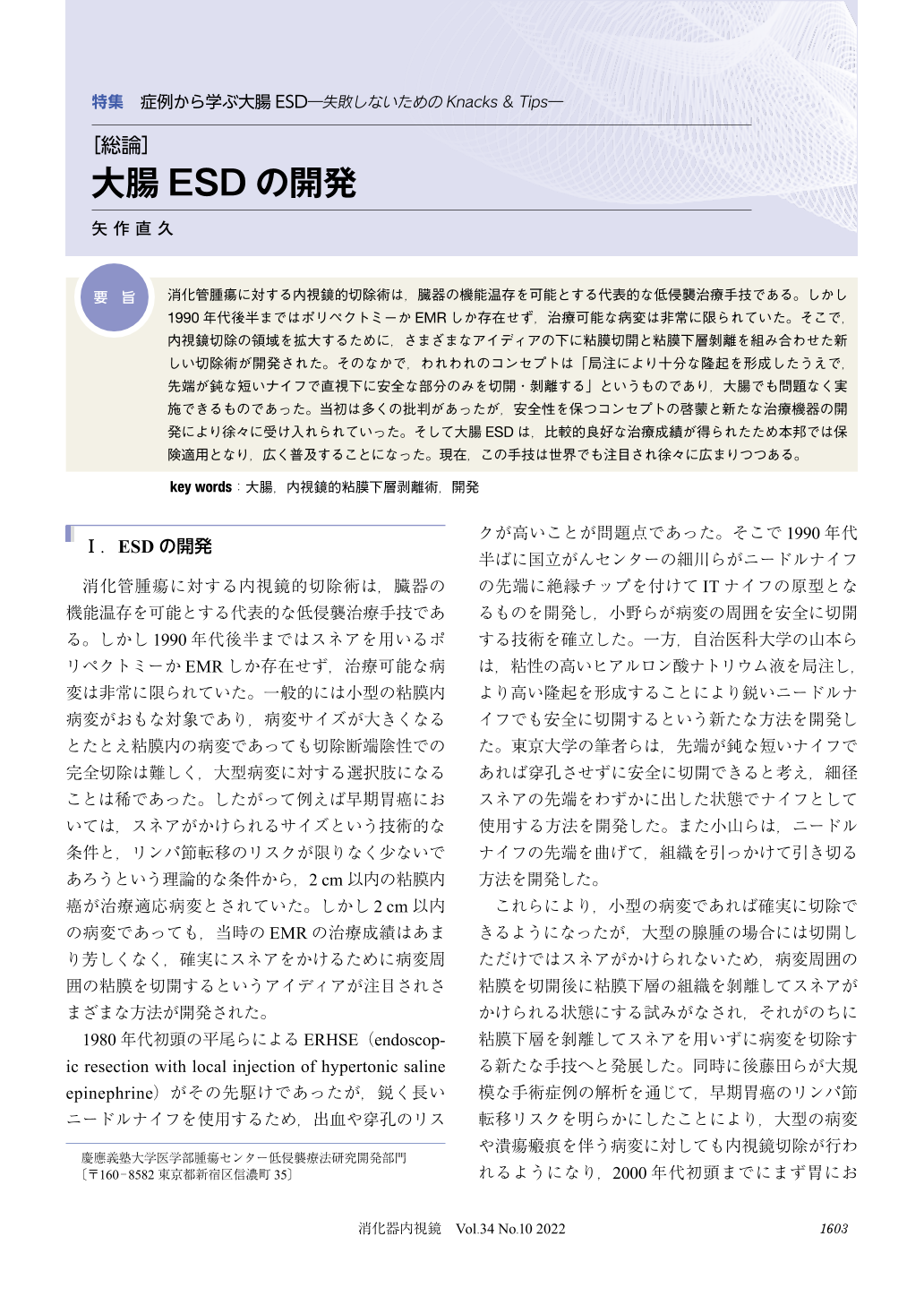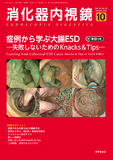Japanese
English
- 有料閲覧
- Abstract 文献概要
- 1ページ目 Look Inside
- 参考文献 Reference
要 旨
消化管腫瘍に対する内視鏡的切除術は,臓器の機能温存を可能とする代表的な低侵襲治療手技である。しかし1990年代後半まではポリペクトミーかEMRしか存在せず,治療可能な病変は非常に限られていた。そこで,内視鏡切除の領域を拡大するために,さまざまなアイディアの下に粘膜切開と粘膜下層剝離を組み合わせた新しい切除術が開発された。そのなかで,われわれのコンセプトは「局注により十分な隆起を形成したうえで,先端が鈍な短いナイフで直視下に安全な部分のみを切開・剝離する」というものであり,大腸でも問題なく実施できるものであった。当初は多くの批判があったが,安全性を保つコンセプトの啓蒙と新たな治療機器の開発により徐々に受け入れられていった。そして大腸ESDは,比較的良好な治療成績が得られたため本邦では保険適用となり,広く普及することになった。現在,この手技は世界でも注目され徐々に広まりつつある。
Endoscopic resection of gastrointestinal tumors is a typical minimally invasive treatment technique that allows preservation of organ function. However, until the late 1990s, only polypectomy or EMR existed, and treatable lesions with those techniques were very limited. To expand the capacity of endoscopic resection, a new technique which consisted of mucosal incision and submucosal dissection was developed based on various ideas. Among them, our concept was to “form a sufficient elevation by local injection and then incise and dissect only the safe portion under direct vision with a blunt ended short needle knife”, which could be performed in the colon without any problem. Although there was a lot of criticism at the beginning, it was gradually accepted through the promotion of the concept of maintaining safety and the development of new devices. Since colorectal ESD achieved relatively good treatment results, it was covered by the insurance system in Japan and became a widespread procedure. Currently, this technique is gradually gaining attention and spreading throughout the world.

© tokyo-igakusha.co.jp. All right reserved.


